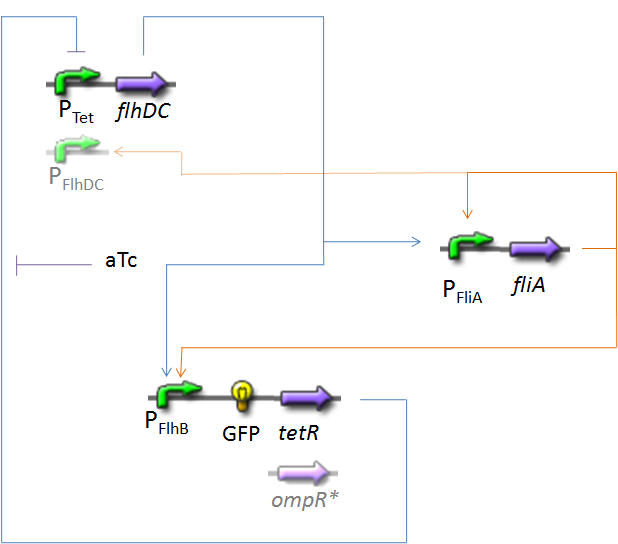Team:Paris/Modeling/Oscillations
From 2008.igem.org
(→Resulting Equations) |
(→Oscillations) |
||
| Line 5: | Line 5: | ||
We just keep here the following circuit, constituing the Oscillations. | We just keep here the following circuit, constituing the Oscillations. | ||
| - | [[Image: | + | <center>[[Image:Model_Oscill.png|center]]</center> |
==Biochemical Assumptions== | ==Biochemical Assumptions== | ||
Revision as of 16:08, 1 August 2008
OscillationsWe just keep here the following circuit, constituing the Oscillations. Biochemical AssumptionsWe do not take into acount the phenomenon of translation : we consider the transduction as leading directly to the protein. We assume that the expression rate of an inducible promoter is proportionnal to the number of created complexes promoter-inducer. In the same way, a repressible promoter has got a basal expression, and its expression is proportionnal to the number of free promoters. Then, in order to consider theses complexes and free promoters, we just consider the complexation reaction between the transcription factor and the promoter. If we consider that the steady-states of these equations are reached much quickly than the proteins are produced, that leads to promoter's expressions well described by Hill function. We use that property to get (see estimations of parameters) different constants involved in the equations below, but we will simulate the complexation reactions in our implementation, too. Endly, we simulate the creation of AHL that leads to the negative feed-back, but we still keep the intra cellular observation scale. We just add the hypothesis that all cells follow this determined behaviour, at the same speed, so that the concentration inside and outside the cell are always the same. Resulting Equations
|
 "
"

